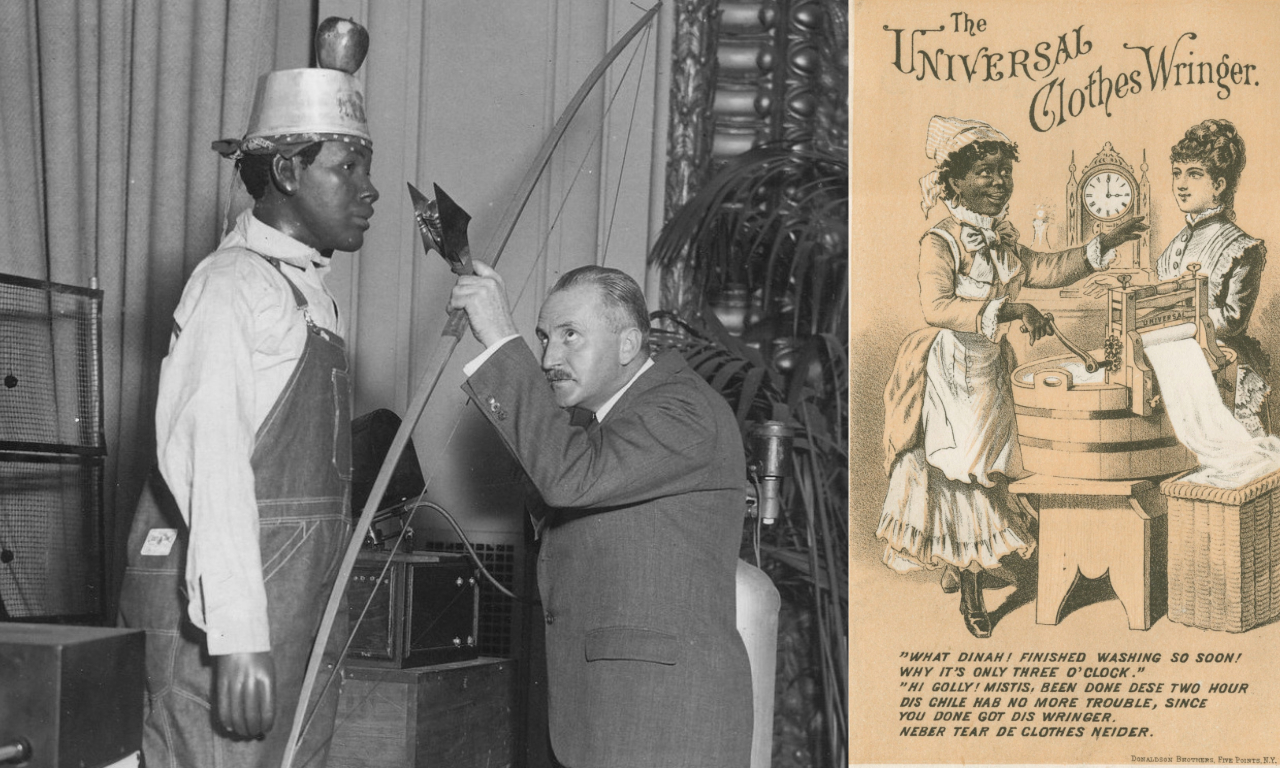Princeton University School of Architecture
Announces the Dissertation Proposal Defense of
Ibiayi Briggs
Black Technical Being(s): Folk Robots, Domestic Technics, and the Ghosts of the Machine Age, 1870–1940
May 22, 2024, 1:00 PM
Room S-118
Committee:
Prof. Jay Cephas, Advisor (Princeton University, School of Architecture)
Prof. Tina Campt (Princeton University, Department of Art & Archeology)
Prof. Sylvia Lavin (Princeton University, School of Architecture)
Prof. Spyros Papapetros (Princeton University, School of Architecture)
Abstract
The relationship between blackness and machines has been a guiding force of technological innovation, although Black labor is often made invisible by these machines. Black technical being is a conceptual framework that makes this relationship visible by connecting the development of Black folk characters to sites of late-nineteenth and early-twentieth century industrial labor. It contends with the strange yet persistent condition of Black labor working with, being likened to, and yet being made invisible by machines, which is at the heart of American industrialization. It proposes that blackness has been the ghost in the machine of this technological progress, and that this spectral presence was shaped by the racialization instituted by the Trans-Atlantic slave trade, organized by the agricultural technics of the plantation, and modernized through the entrenchment of industrial capitalism. Folk characters were vectors of technological progress because they were narrative representations of the shifting mode of Black labor, and were also utilized as the human embodiment of emerging technologies. Three folk characters, John Henry, Mammy, and Rastus are potent examples of the coproduction of blackness and machines and their particular roles in the construction of the railroad, the mechanized home, and the world’s fair, respectively. These seemingly disparate sites are united by the presence of these Black technical beings which were heavily-trafficked in the American cultural imaginary thorough folktales created by Black workers, and their subsequent appropriation into more widespread stories, caricatures, and technical systems. These folk characters were mediators between the realities and ideals of technical systems. John Henry was a figure of the literal construction of the railroad which facilitated Black migration north, and he is an archetype of modern exhaustion and the foreboding doom of technological “progress.” Mammy was a central character in the development of domestic science manuals and home appliances, and also challenges what is actually required for the comfort and convenience demanded by new technologies. The name Rastus was bequeathed on a Westinghouse robot which tested the component parts of their appliances, and he also shows how performance and control were instrumentalized within the exhibitionary complex of world fairs. Although minstrelsy is primarily studied through histories of music and theater, this dissertation reveals minstrelsy as the embedded infrastructure of various American technologies and their resulting spatial logics.

